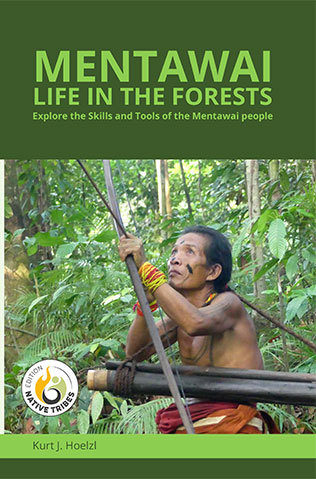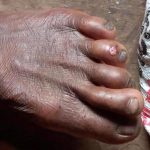Hadzabe people use footwear to protect their feet in their living areas. They need adequate foot protection against thorns, sharp plant blades, and edgy stones, as well as against the heat on sand and rock surfaces. In former times, they used rawhide sandals; nowadays, they buy them from Datogas or Hadzabe living in villages. Due to the different requirements, male and female Hadzabe prefer different footwear styles.
Footwear for Hadzabe males
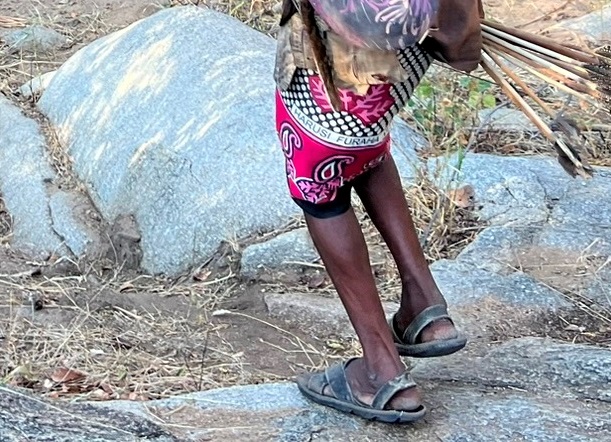
Males have to walk long distances over rough terrain when hunting. Under these circumstances, their feet move laterally and tangentially on top of the sole. It is, therefore, uncomfortable to wear loosely fitted flip-flops with a toe thong. Hence, most Hadzabe men use sandals with toe and ankle straps.
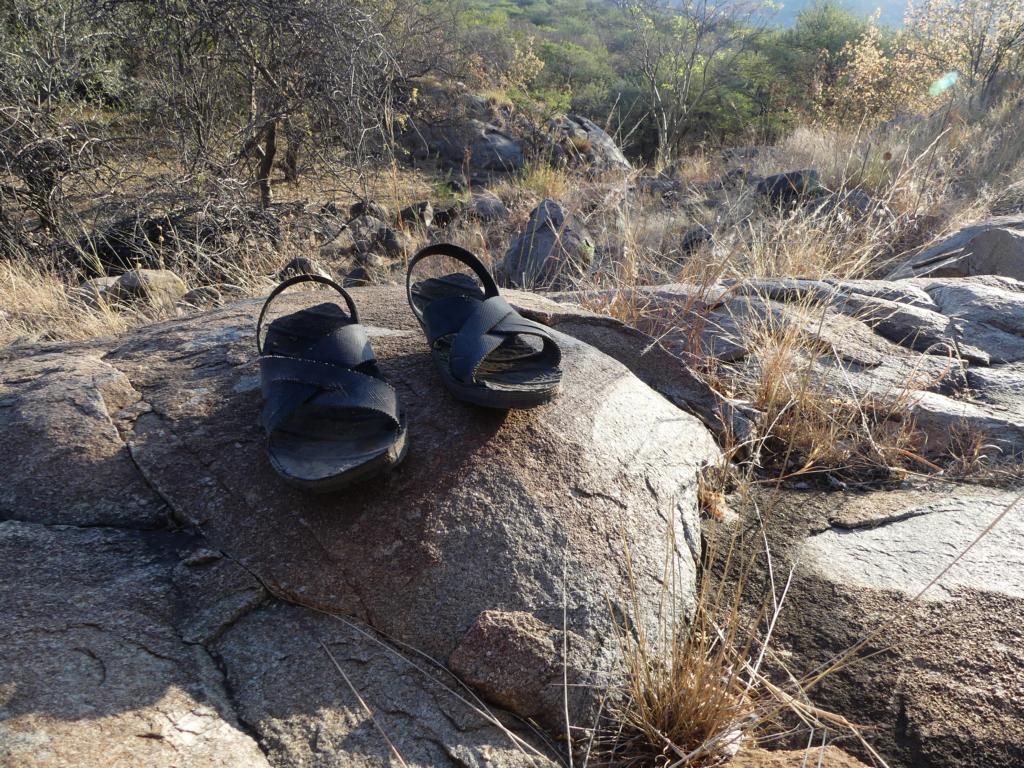
Such sandals securely fit the feet and do not clap when walking. The noisiness of the sole on sand depends on the profile of the rubber tire they are made from. The less deep their profile, the quieter they are.

Every profile edge will scrape sand grains over others, resulting in grinding noises. That is why, for example, alpine hiking boots are unsuitable for hunting noiselessly in sandy environments like African savannahs.
When hunting hyraxes, Hadzabe remove their sandals before climbing rocky boulders, as they need their toes to improve their grip on rocks.
Footwear for Hadzabe females and children
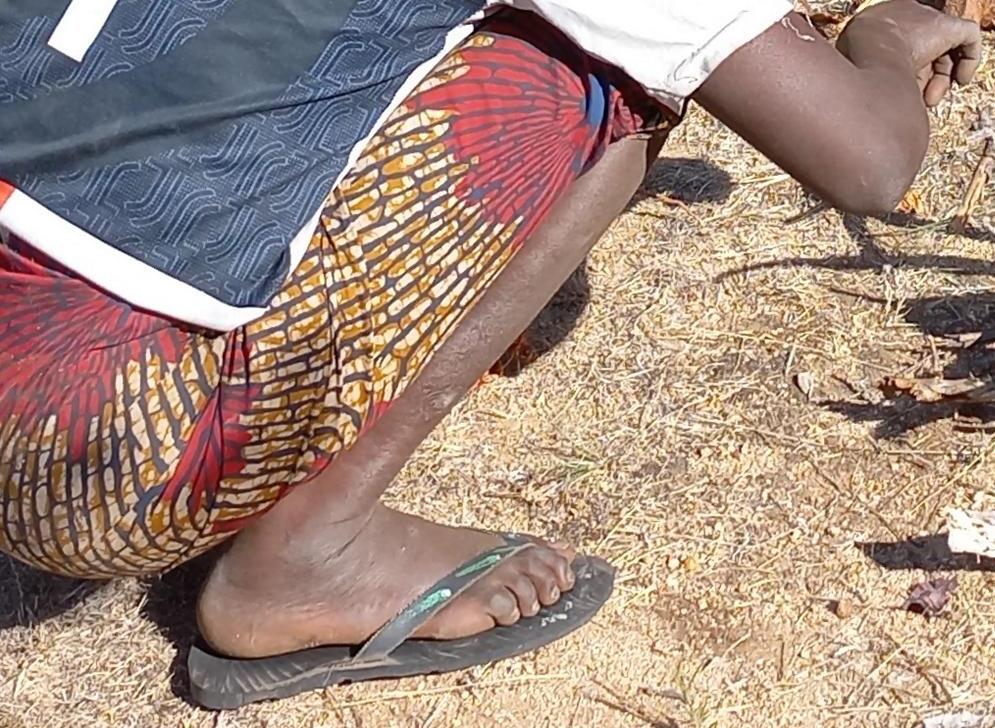
The requirements for footwear for females and children differ from those for men. Females mainly collect berries and tubers on flat ground, and there is no need to hide clapping noises. They spend much time around the camp area, where they prefer removing their footwear for daily chores. Therefore, females and children like to use flip-flops for foot protection.
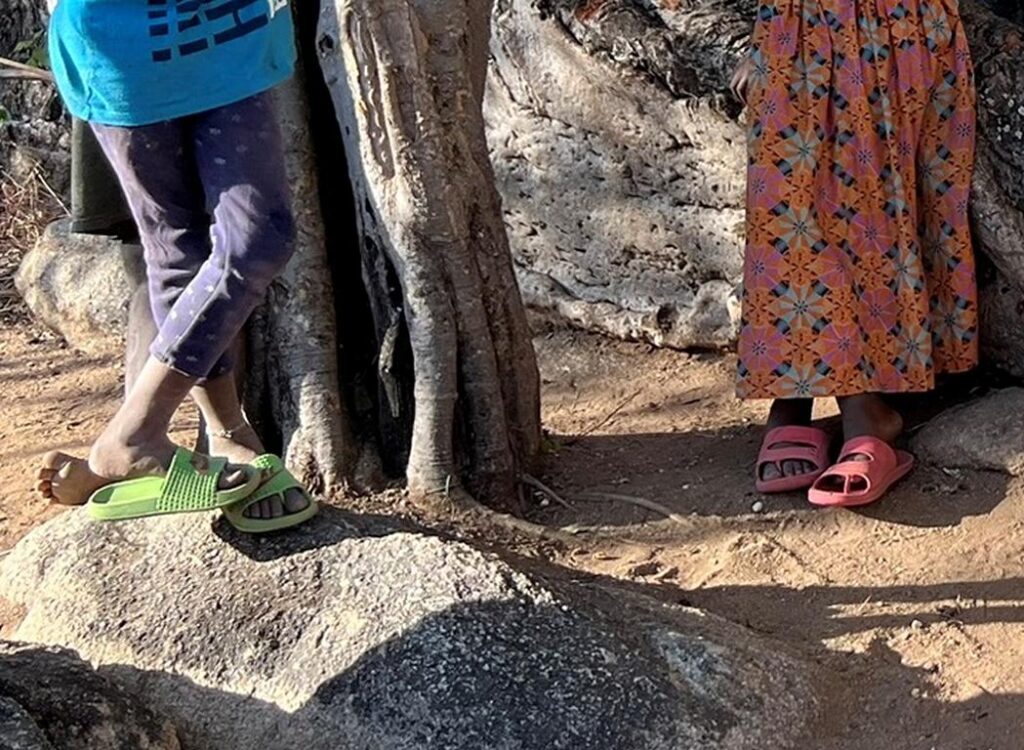
Cultural cross-over of Hadzabe men’s footwear
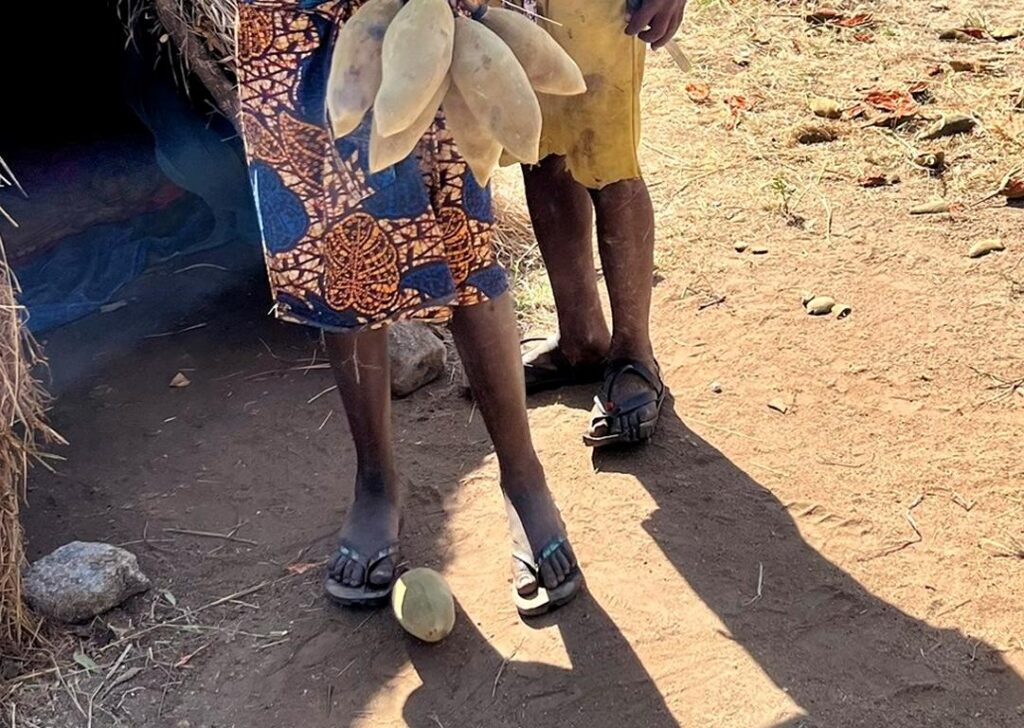
The most successful hunter of the clan we visited wore old and heavily worn-out Maasai sandals. He liked the protection of the decorative antenna above the toe strap for protecting the bridge between his toes and the ankle against sharp grass blades. It is unknown where he got these sandals from; he was the only person in the clan who had worn this type.
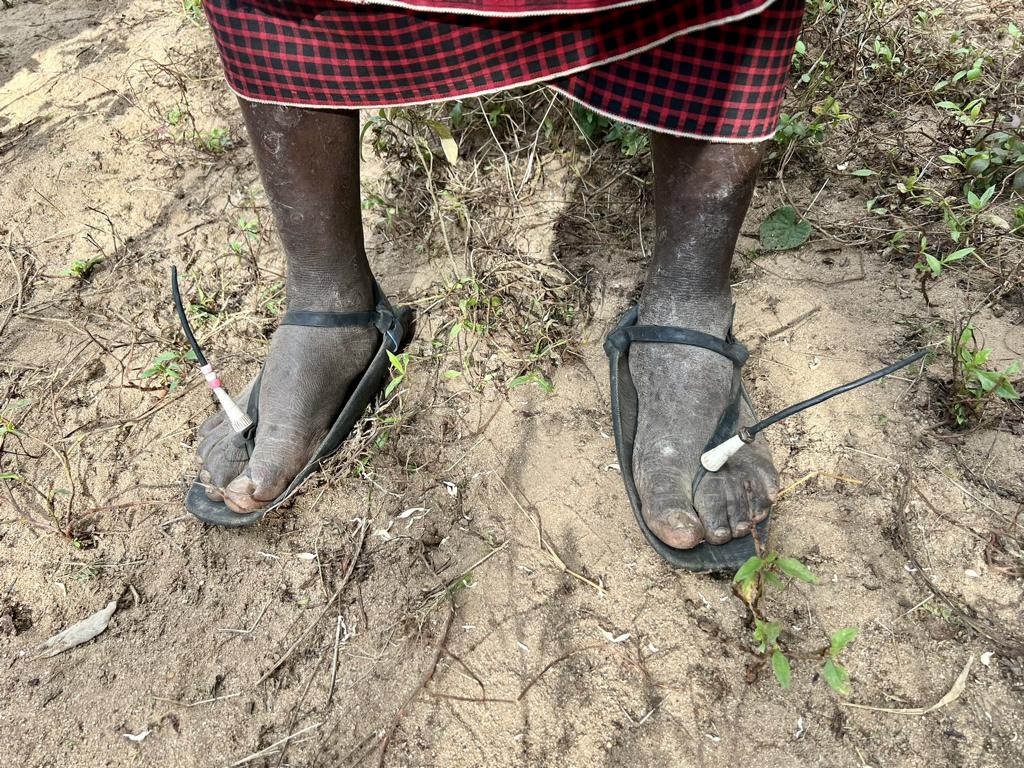
Similar Maasai-style sandals were worn by the Akie people, who are the second remaining hunter-gatherer tribe in Tanzania. The Akie tribe is culturally heavily influenced by Maasais but is trying to regain its cultural identity. They live about 600 km apart from the Hadzabe people.
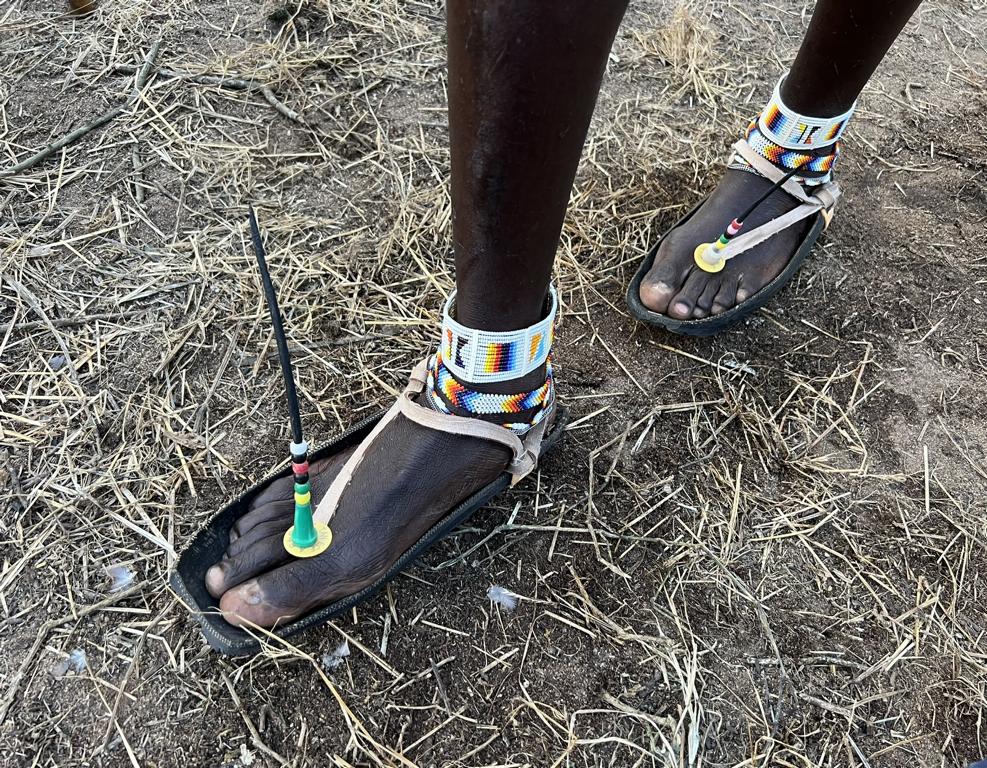
This picture shows the original Maasai footwear style, which is still worn daily by proud Maasais in remote areas.
It was interesting to see the same style of Maasai footwear on members of three different tribes. The Maasais use footwear not only as a practical but mainly as a decorative element. For Akies, it is a convenient piece of equipment with a decorative element. For the Hadzabe, only its practical value is regarded.
Lessons learned from Hadzabe footwear
- Hadzabe men wear predominantly rubber tire sandals with toe and ankle straps.
- Females and children wear flip-flop sandals of various designs.
- One Hadzabe man was found wearing old Maasai sandals, which protected the bridge of his feet.
Additional information
My book ‘Hadzabe Survival Skills‘ offers more skills, knowledge, tools, and techniques for the Hadzabe people’s life in their natural environment. It is available on Amazon.com and Amazon’s regional websites.
.

